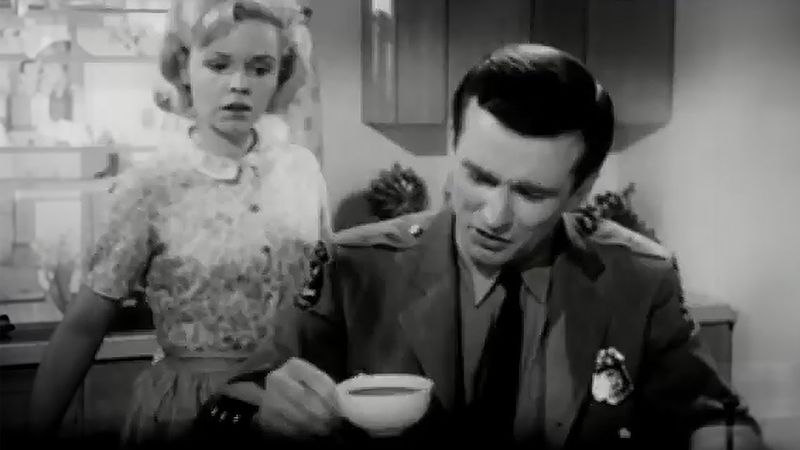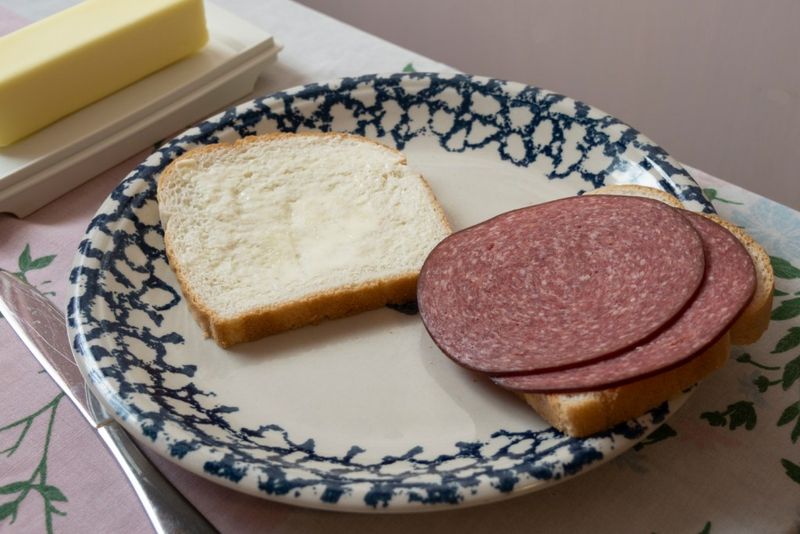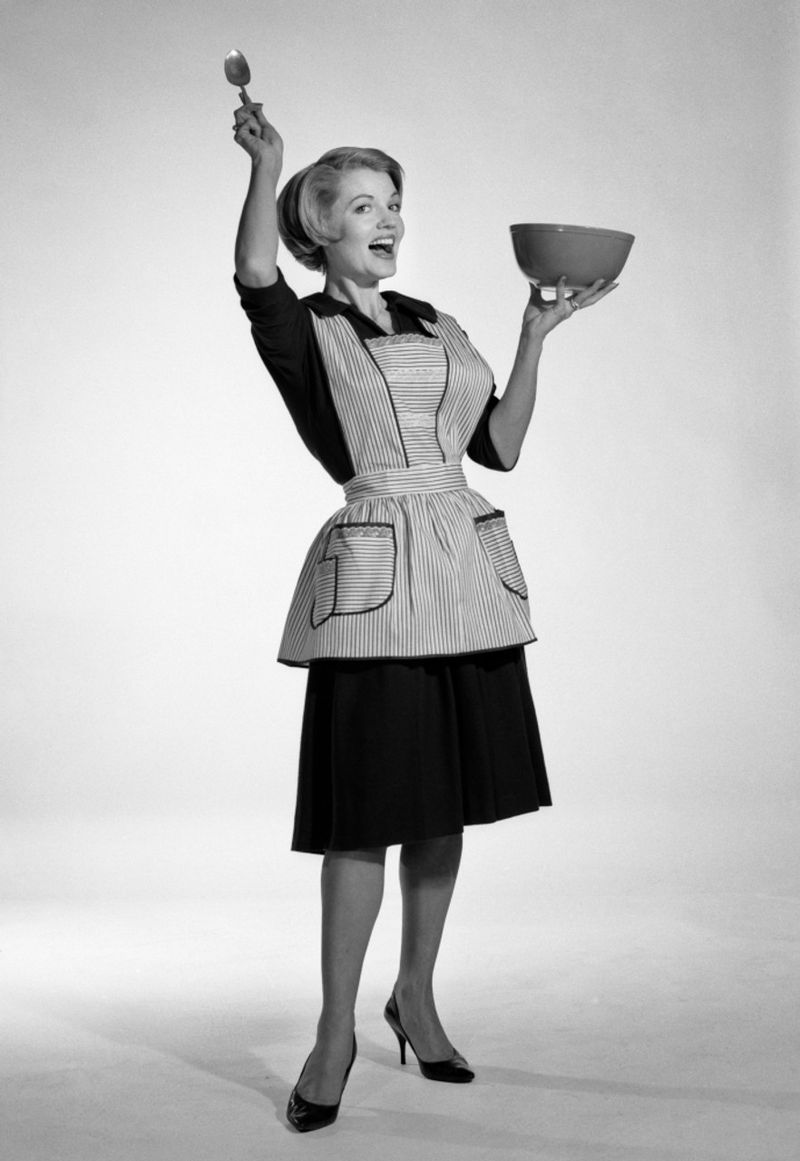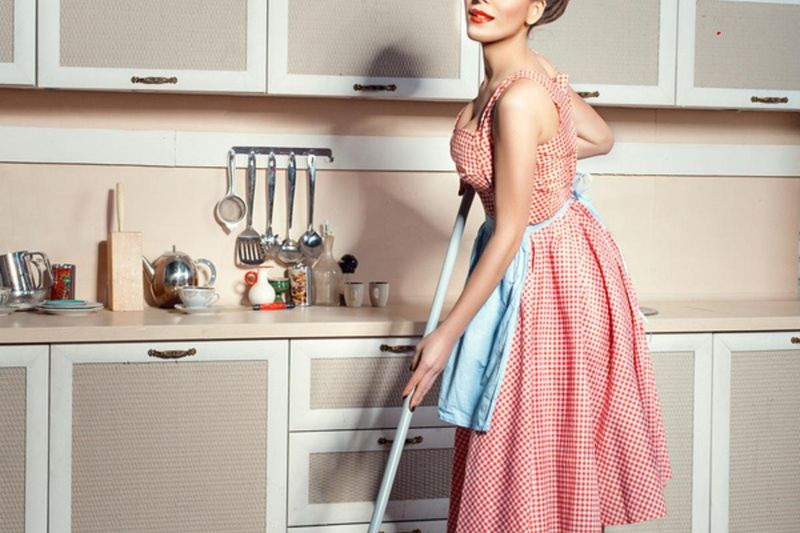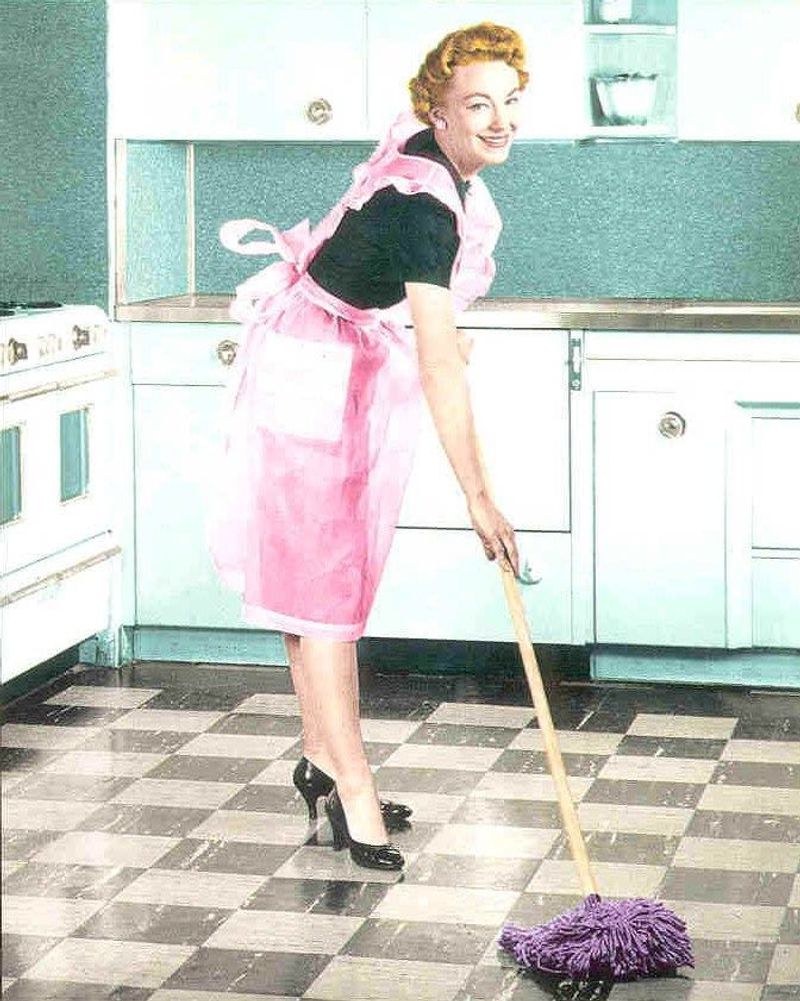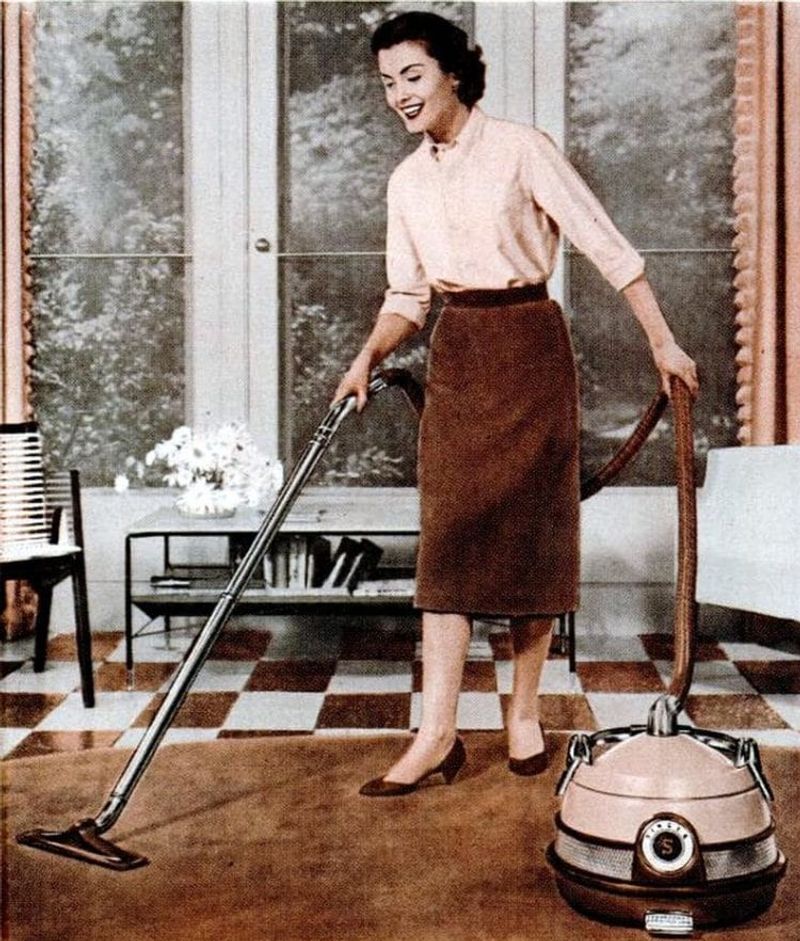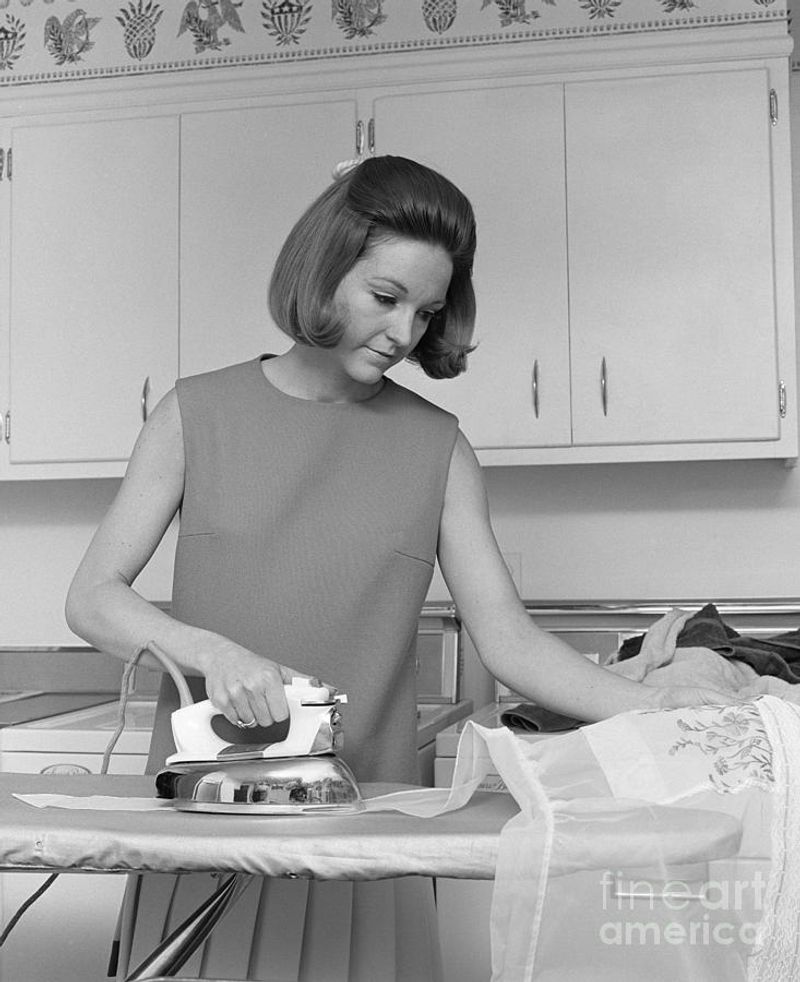The life of a 1960s stay-at-home mom was nothing short of a full-time job with overtime hours.
While today’s moms might scroll through social media before their first cup of coffee, the 1965 housewife had already conquered half her daily chores before most people hit the snooze button.
These morning routines weren’t just suggestions—they were social expectations that defined a woman’s worth in her community.
1. Make the Bed—Military Style
The day began with hospital corners so tight you could bounce a quarter off the sheets. A properly made bed wasn’t just about tidiness—it reflected a woman’s character and competence as a homemaker.
Pillows needed fluffing, blankets required perfect alignment, and God forbid if there was a single wrinkle in sight. Many women followed the same bed-making ritual their mothers taught them, creating a generational legacy of crisp corners and smooth surfaces.
Some even kept a ruler nearby to ensure perfect symmetry between both sides of the comforter. The bed-making ritual wasn’t complete until every element looked magazine-worthy.
2. Brew the Coffee for Her Husband (and Serve It in Silence)
Morning coffee wasn’t just a beverage—it was a sacred marital ritual. The 1965 wife measured grounds with scientific precision, brewing the perfect pot timed to her husband’s awakening.
Heaven help her if the coffee was too weak, too strong, or—worst of all—not ready when he entered the kitchen. Women often served this liquid offering in their best china, not everyday mugs, especially if it was payday or their anniversary.
The unspoken rule: don’t burden him with household problems or children’s issues during this sacred caffeine ceremony. A good wife knew to save conversation until the cup was half-empty.
3. Cook a Full Breakfast—No Cereal Allowed
Cereal boxes were hidden away like contraband in 1965 kitchens. A proper breakfast meant eggs (cooked to each family member’s preference), bacon (crispy but not burnt), toast (buttered while hot), fresh-squeezed orange juice, and often pancakes or waffles as a side dish.
Women planned these morning feasts the night before, sometimes rising at 5 AM to begin preparations. Breakfast wasn’t just nutrition—it was a display of devotion and domestic prowess.
Many wives kept recipe cards with each family member’s preferences: “Johnny – eggs over easy, no runny whites; Husband – three strips of bacon, extra crispy.” Breakfast cleanup alone could take 30 minutes.
4. Get the Kids Dressed, Fed, and Ready for School
“Mother’s morning marathon” began with waking children at precise intervals—oldest first, youngest last. Each child needed clean clothes laid out the night before, with socks that matched not just each other but often their outfits too.
Hair required brushing (100 strokes for girls), teeth needed inspection, and faces demanded a once-over with a dampened washcloth. Breakfast supervision included posture corrections and manner reminders: “Elbows off the table, dear.”
The final checklist: homework signed, lunch packed, permission slips located, mittens paired, and a quick lesson in please-and-thank-you before the school bus arrived. Mothers often stood at the door until children were completely out of sight.
5. Pack Her Husband’s Lunch (With a Handwritten Note)
The midday meal was a reflection of wifely devotion, carefully crafted while he showered. Sandwiches weren’t simply slapped together—meat needed proper folding, lettuce required patting dry, and crusts were often trimmed for presentation.
Everything was wrapped in wax paper with precise folds, then tucked into a metal lunchbox alongside a thermos of hot coffee or soup. Dessert might include a slice of homemade pie or cookies baked specifically for his lunchbox.
The crowning touch: a handwritten note expressing affection or encouragement for his workday. “Working hard for us means so much. Your favorite pot roast tonight!” These lunch-packing rituals were discussed and compared among neighborhood wives as badges of marital dedication.
6. Do Her Hair and Makeup
Appearing “natural” paradoxically required an arsenal of products and considerable time. The 1965 housewife wouldn’t dream of facing the day bare-faced—even if the only witness was the vacuum cleaner.
Hair needed setting the night before with uncomfortable rollers, then brushing and spraying into a helmet-like creation that could withstand wind, rain, and children’s sticky fingers. Foundation, powder, lipstick, and a touch of mascara were non-negotiable morning essentials.
Many women maintained separate vanities from their husbands, creating tiny beauty stations where they transformed into the polished versions their communities expected. The milkman, mailman, and neighbors all deserved to see a put-together woman, regardless of the household chaos behind her.
7. Change Into a Clean Dress and Fresh Apron
The morning wardrobe change followed strict social protocols. First came the cleaning outfit—a simple housedress for scrubbing and dusting. Once the heavy cleaning concluded, a quick change into a presentable day dress became necessary.
Aprons weren’t merely functional—they were fashion statements with pockets for tissues, safety pins, and perhaps a lipstick for quick touch-ups. Many women coordinated their lipstick shade with their apron trim, creating a cohesive look even while scrubbing toilets.
Neighborhood women often noticed and commented if someone wore the same dress two days running. “Poor Martha must be overwhelmed—she had on that blue dress yesterday too.” Clothing rotation was carefully managed to avoid such whispers.
8. Wipe Down the Kitchen from Breakfast
Breakfast aftermath resembled a military cleanup operation. Dishes weren’t just washed—they were inspected for water spots before being hand-dried and returned to their precise cabinet positions.
Countertops required wiping in specific patterns (usually left to right), and stove burners needed immediate attention to prevent hardened food particles. The sink demanded sanitizing after use, often with a slice of lemon to combat odors and maintain that just-cleaned shine.
Floor crumbs were swept, not vacuumed, with specialized brushes kept solely for kitchen use. Many women timed themselves on kitchen cleanup, treating it as a personal challenge to beat yesterday’s record while maintaining impeccable standards. No breakfast dish dared remain unwashed past 8:30 AM.
9. Throw in a Load of Laundry
Laundry wasn’t a weekly chore but a daily ritual beginning promptly after breakfast cleanup. Monday traditionally hosted the whites—sheets, shirts, and undergarments sorted meticulously by fabric type and soil level.
Stain treatment was an art form, with specialized knowledge passed down through generations. “For blood, cold water immediately; for grass stains, a paste of baking soda.” Washing machines existed but required constant supervision, and many items still needed hand-washing in the sink.
The laundry schedule aligned with weather forecasts for optimal line-drying conditions. Clothespins were organized by size, and sheets were hung with precision to minimize ironing later. Electric dryers existed but were considered lazy options for days with bad weather only.
10. Sweep the Floors
Floor sweeping wasn’t just about cleanliness—it was a moral imperative. The 1965 housewife attacked this task with religious devotion, knowing that unexpected visitors judged her character by her floor’s condition.
Different brooms served different purposes: corn bristles for kitchen floors, softer bristles for living areas, and specialized brushes for corners and baseboards. Sweeping followed a specific pattern, usually starting from the room’s far corner and working toward the door.
Dust pans were emptied immediately, never left with visible debris. Some particularly dedicated women kept a notebook tracking which rooms were swept on which days, creating a forensic record of their domestic diligence. Floor cleanliness ranked just below godliness in the 1960s hierarchy of womanly virtues.
11. Dust the Living Room
Dusting wasn’t merely cleaning—it was a daily battle against visible evidence of domestic neglect. The 1965 housewife approached this task with specialized weapons: lamb’s wool dusters for delicate figurines, slightly dampened cloths for wood surfaces, and special polishes for different materials.
Family photos required gentle care with a separate, lint-free cloth. Knickknacks weren’t simply dusted around—they were picked up, cleaned underneath, and returned to their exact positions (often marked by tiny, invisible pencil dots).
Many women performed the “white glove test” on their own work, running a clean finger along surfaces to check for dust remnants. Dusting order mattered too: high surfaces first, then eye-level, then low, to prevent dust from resettling on already-cleaned areas.
12. Water the Houseplants
Houseplants weren’t merely decorative—they were living proof of a woman’s nurturing abilities. If she couldn’t keep a fern alive, how could she raise children properly? This logic created morning plant-care rituals approaching spiritual practice.
African violets, spider plants, and ferns received individualized attention, often while being whispered to encouragingly. “Looking lovely today, Phyllis,” a woman might murmur to her prized fern. Many kept detailed watering schedules noting each plant’s preferences on index cards.
Dead leaves were immediately removed and hidden in tissue before disposal—having a struggling plant was embarrassing evidence of domestic failure. Plant health was frequently discussed at neighborhood coffee gatherings, with cuttings exchanged as precious gifts between women who proved themselves worthy plant stewards.
13. Check the Mail and Pay Bills
Mail management required precise organization even before the postman arrived. The 1965 housewife prepared by sorting yesterday’s correspondence into categories: bills (to be paid immediately), personal letters (to be answered within 24 hours), and advertisements (to be reviewed for coupons).
Bill payment was a ceremonial task performed at the kitchen table with checkbook, stamps, and return address labels arranged just so. Many women maintained meticulous payment ledgers, recording every household expense down to the penny.
Outgoing mail received special attention—envelopes were addressed in one’s best penmanship, sealed carefully (sometimes with a kiss for luck), and positioned prominently for the mail carrier. Some especially organized women kept a calendar noting when to expect certain bills, allowing them to plan the household budget with military precision.
14. Iron the Clothes
Ironing was elevated to an art form requiring specialized equipment and techniques. The 1965 housewife dedicated a specific morning time slot to this task, often setting up the ironing board in front of the television to catch a morning show while pressing the family’s garments.
Different fabrics demanded different temperature settings, and sprinkling water from special bottles preceded the actual ironing. Shirts required a specific sequence: collar first, then cuffs, sleeves, front panels, and finally the back.
Even undergarments and pillowcases received the hot iron treatment—wrinkles anywhere were considered evidence of slovenly housekeeping. Many women ironed their husbands’ handkerchiefs into precise squares with military corners. The rhythmic movement of the iron across fabric provided a meditative moment in the busy morning schedule.
15. Polish the Furniture
Furniture gleam wasn’t optional—it was a reflection of household standards. The dedicated 1965 housewife approached polishing with specialized products for different wood types: lemon oil for oak, beeswax for cherry, and specific formulations for mahogany.
Application followed strict protocols: apply with the grain, never against it, using soft cloths (often repurposed from worn-out men’s undershirts). The final buffing required a separate clean cloth and considerable elbow grease to achieve the coveted mirror-like finish.
Many women tested their work by checking for fingerprints or breath marks—breathing on the surface should create a fog that disappeared quickly on properly polished wood. Furniture care knowledge was passed down through generations, with mothers teaching daughters the proper circular motion for applying polish long before they learned algebra.
16. Write in Her Daily Planner or Recipe Journal
Documentation of domestic life wasn’t just helpful—it was essential for the organized 1965 housewife. Morning journaling typically occurred during a brief coffee break after major cleaning tasks were complete but before lunch preparation began.
Leather-bound planners contained meticulous notes on meal rotations, cleaning schedules, and family appointments. Recipe journals documented successful dishes with detailed notes: “John loved the pot roast with extra carrots; Mary picked out the onions—try mincing smaller next time.”
These journals became family heirlooms, passing down not just recipes but the emotional landscape of daily life. Many women used special pens for these records and developed elaborate shorthand systems. The morning writing ritual provided rare moments of reflection in days otherwise devoted to serving others’ needs.
17. Be Available for a Surprise Visit (Looking Flawless)
The doorbell could ring at any moment, requiring instant hostess transformation. The 1965 housewife maintained constant readiness for unexpected visitors—neighbors, in-laws, or the dreaded pastor’s wife might appear without warning to assess her domestic standards.
Emergency preparations included a designated “company drawer” containing fresh guest towels, quickly deployable snacks, and perhaps a lipstick for touch-ups. Many women kept a mental inventory of house status: which rooms were presentable and which doors needed closing before ushering guests to the living room.
The ability to pivot from floor-scrubber to gracious hostess in seconds was considered an essential female skill. “Just stopping by” visitors received the same warm welcome as scheduled guests, regardless of how they disrupted the morning task schedule. Appearing flustered was simply not an option.


